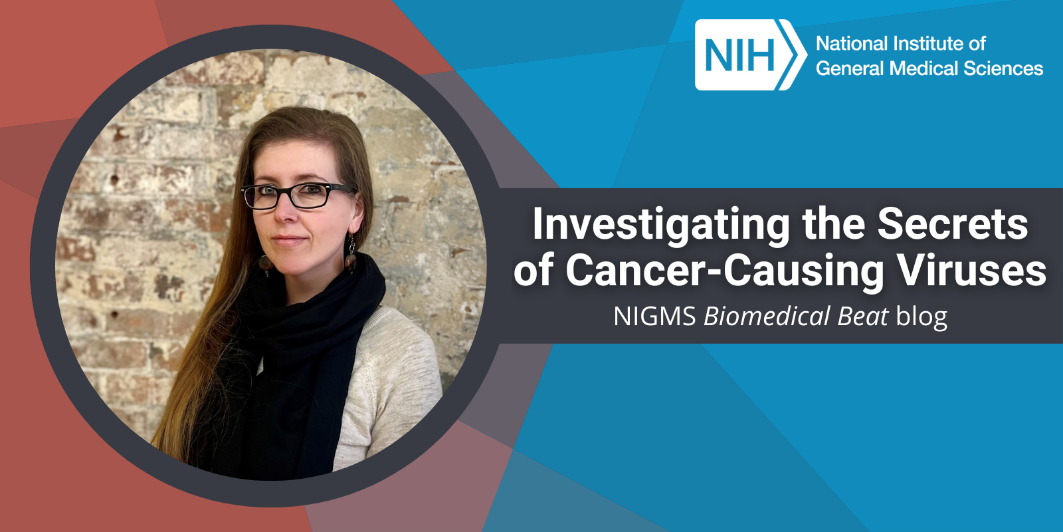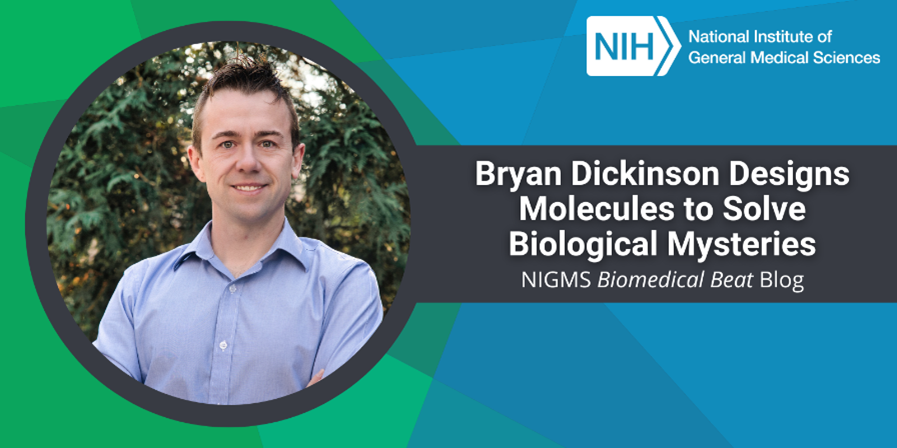
While she was in graduate school, Mandy Muller, Ph.D., became intrigued with viruses that are oncogenic, meaning they can cause cancer. At the time, she was researching human papillomaviruses (HPVs), which can lead to cervical and throat cancer, among other types. Now, as an assistant professor of microbiology at the University of Massachusetts (UMass) Amherst, Dr. Muller studies Kaposi sarcoma-associated herpesvirus (KSHV), which causes the rare AIDS-associated cancer Kaposi sarcoma.
A Continental Change
Dr. Muller has come a long way, both geographically and professionally, since her childhood in France. She was the first person in her family to graduate from high school, where she excelled in science, and went on to attend École Normale Supérieure (ENS) de Lyon, a research-oriented undergraduate institution in Lyon, France. “We spent weeks at a time in laboratory-based classes, working in real labs. That’s when I realized people could do research full-time, which caught my attention,” says Dr. Muller. She double-majored in biology and geology, and soon chose to focus her career on immunology and virology.
Dr. Muller stayed at ENS de Lyon for a master’s degree in biology and spent two semesters at Institut Pasteur in Paris, France, in the lab of Caroline Demeret, Ph.D. The lab was such a great fit that she decided to stay there for her Ph.D., working on a project comparing the many types of HPVs. Hundreds of types exist, but only a few are known to cause cancer. Dr. Muller wanted to learn what makes the oncogenic HPVs different from the non-oncogenic ones. By directly comparing them, Dr. Muller found that the HPV protein E2 functions differently between these two groups of viruses, which may be one of the reasons for the difference in cancer-causing potential.
After completing her Ph.D., Dr. Muller moved to the United States for a postdoctoral position (postdoc) at the University of California, Berkeley. She worked in the lab of Britt Glaunsinger, Ph.D., who researches many aspects of KSHV, including how it causes infection, what proteins it produces and when, and how it changes the activity of the cells it infects (host cells). Dr. Glaunsinger and her team also study mRNA, the intermediate molecule in the process of building a protein from DNA instructions. “I started making the shift to researching mRNA, and, specifically, studying how viruses degrade host-cell mRNA molecules to prevent protein production,” says Dr. Muller. Degrading these mRNA molecules prevents their translation into proteins, freeing up the cell’s protein-making machinery. The virus hijacks that machinery to make its own proteins, which it needs to survive and infect new cells.
How Viruses Destroy Host mRNA
Now, Dr. Muller has her own lab where she’s expanding on the work she started in her postdoc. KSHV and some other viruses produce a nuclease enzyme that destroys mRNA molecules by chopping them into small pieces. Researchers estimate that this nuclease degrades 70 to 80 percent of host-cell mRNA during a KSHV infection.

But Dr. Muller has some unanswered questions about this process: “If 70 to 80 percent of mRNA molecules are degraded, that leaves 20 to 30 percent that are essentially invisible to the nuclease. We’re very puzzled by this—how do they escape?” Her team studied the host mRNA molecules that are left untouched by the nuclease and found that the same ones consistently escape. Some of these mRNA molecules code for proteins that support the virus’ survival and replication, but others help host cells fight viral infection. This finding suggests that some mRNA molecules are spared for reasons other than coding for proteins that benefit the virus.

Next, the team wants to study whether mRNA modifications are involved in this escape mechanism. After mRNA molecules are transcribed, they change slightly into their mature forms through a process known as post-transcriptional modification. For instance, the tail of an mRNA will receive a “cap” that helps it leave the nucleus and protects it from degradation. Dr. Muller wonders if KSHV changes how post-transcriptional modifications are added to host mRNA molecules, and if the ones that escape degradation have a way to evade these changes.
“As we get a better understanding of how these viruses work, we may find a way to block the development of the cancers they cause,” says Dr. Muller. She’s hopeful that her research will contribute to RNA technology capable of stopping KSHV replication.
The Great Moments
Dr. Muller acknowledges that being a scientist is demanding and that just one person can’t answer big questions like the ones about KSHV. She emphasizes to her students that building a network of colleagues you can count on for help is hugely important. Dr. Muller’s network and students are at the center of what she considers the “great moments” in science. The times that bring her the most joy are when a student excitedly relays the results of an experiment or reads a paper and gets a new idea of an experiment to try. “My students are really my pride—I couldn’t be prouder of them,” she says. Although working in science has challenges, seeing her lab’s efforts help unravel the mysteries of KSHV keeps Dr. Muller as enthusiastic about her research as she’s ever been.
Dr. Muller’s work is supported by the NIGMS Maximizing Investigators’ Research Award program through grant R35GM138043.







